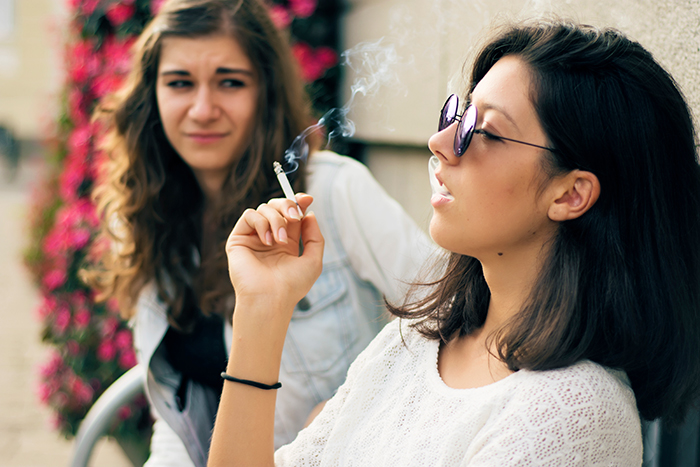Lung Cancer Awareness: Your Risks Beyond Smoking

You’re correct to believe that cigarette smoking is strongly tied to lung cancer. In fact, smoking is the biggest risk factor for lung cancer. In the United States, cigarette smoking has led to 80 to 90 percent of lung cancer diagnoses.
But that still leaves another 10 to 20 percent of lung cancer patients who never smoked tobacco. So, what else may put you at risk for developing this life-threatening disease, and what can do to help prevent it?
Family history of lung cancer
If your grandparents, parents, brothers/sisters or children have had lung cancer, your own risk may be higher based on your genetics or exposure to secondhand smoke at home. A family history of lung cancer (among other criteria) may qualify you for lung cancer screening.
Secondhand smoke
In the U.S., about 7,300 nonsmokers die from lung cancer due to secondhand smoke every year. Two out of every five non-smoking adults in the U.S. and about half of all U.S. children are exposed to secondhand smoke, according to the Centers for Disease Control and Prevention.
Don’t allow your children or yourself to become a statistic.Inform the smokers in your home and work environment about this serious risk to the people around them, and insist that they take it outside.
Workplace exposure
Exposure to these substances can cause lung cancer, even among those who have never smoked. With increased exposure, the risk of developing lung cancer also increases.
- Asbestos
- Arsenic in drinking water (primarily from private wells)
- Chromium
- Nickel
- Beryllium
- Cadmium
- Tar and soot
- Diesel exhaust
- Some forms of silica
Air pollution
Air pollution from gas-powered vehicles, factories and power plants may negatively affect your lungs the same way secondhand smoke does.
HIV infection
People who are diagnosed with the human immunodeficiency virus (HIV) may have more than twice the risk of lung cancer. Because smoking is more common among those with HIV, it’s unclear if the increased risk of lung cancer is due to the infection’s impact on the immune system or from exposure to cigarette smoke.
Radiation exposure
Being exposed to radiation from any of the following sources increases the risk of developing lung cancer.
- Radiation therapy to the chest used to treat certain cancers; the higher the dose of radiation, the higher the risk for lung cancer.
- Imaging tests, such as CT scans
- Radon, which is a naturally occurring radioactive gas. It can enter through cracks in the floor, walls or foundation and contaminate the air and water supply while remaining tasteless and odorless. Among nonsmokers with lung cancer, about 30 percent of deaths have been linked to radon exposure. If you’re concerned about the presence of radon in your home, testing kits and remediation are available.
- Atomic bomb radiation following an explosion
Take action
If you’re a smoker, now is the time to talk to your doctor about smoking cessation programs, medications and resources to help you quit successfully.
Tips to reduce your risk of developing lung cancer:
- Test your home for radon levels
- Use protective equipment at work to avoid carcinogen exposure
- Eat a healthy diet rich in fruits and vegetables
- Exercise regularly
“If you have a history of heavy smoking, a family history of lung cancer or known exposure to other risk factors, you may be eligible for lung cancer screening at Sylvester,” said Dr. Nestor Villamizar, thoracic surgeon at Sylvester Comprehensive Cancer Center, part of the University of Miami Health System.
Other qualifying criteria apply. Visit the Sylvester lung cancer screening eligibility website to learn if you are a candidate for screening.
Tags: Dr. Nestor Villamizar, lung cancer, lung cancer screening, second hand smoke, Sylvester Comprehensive Cancer Center
